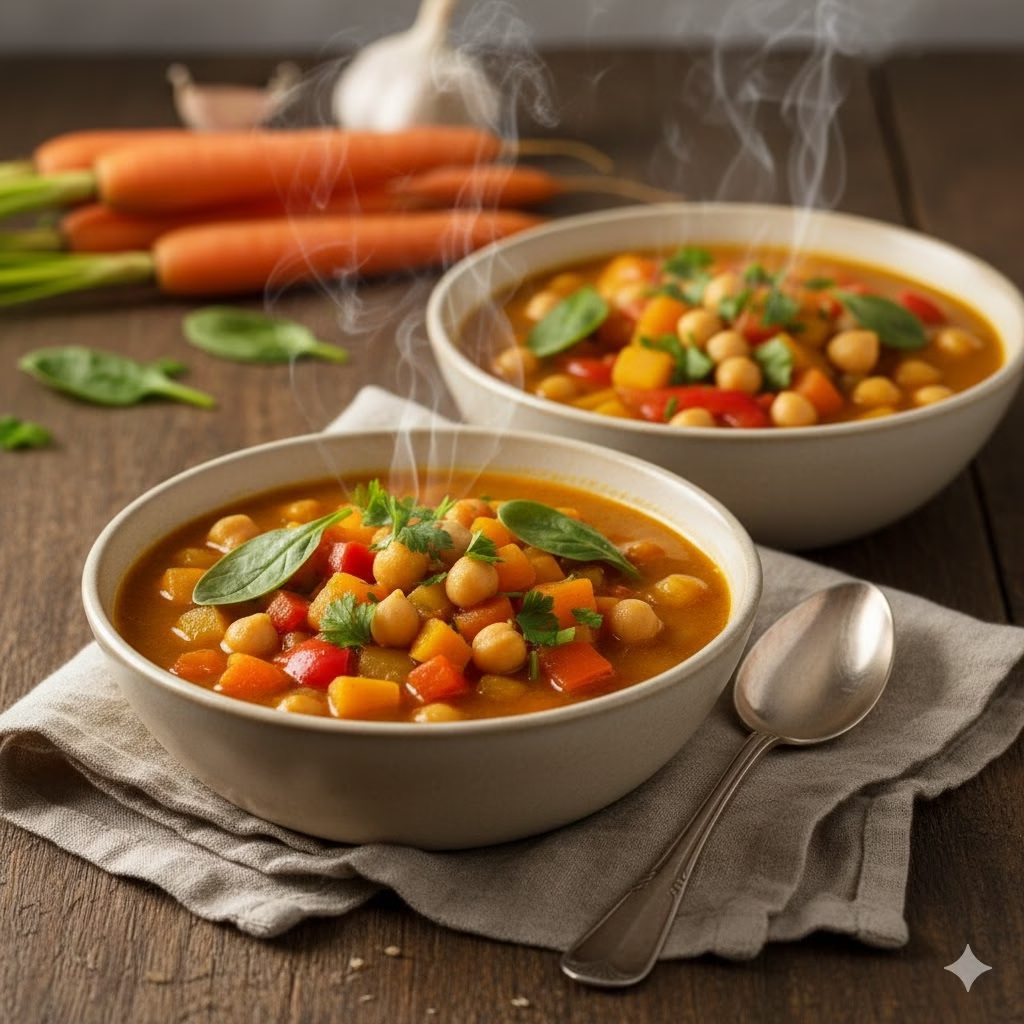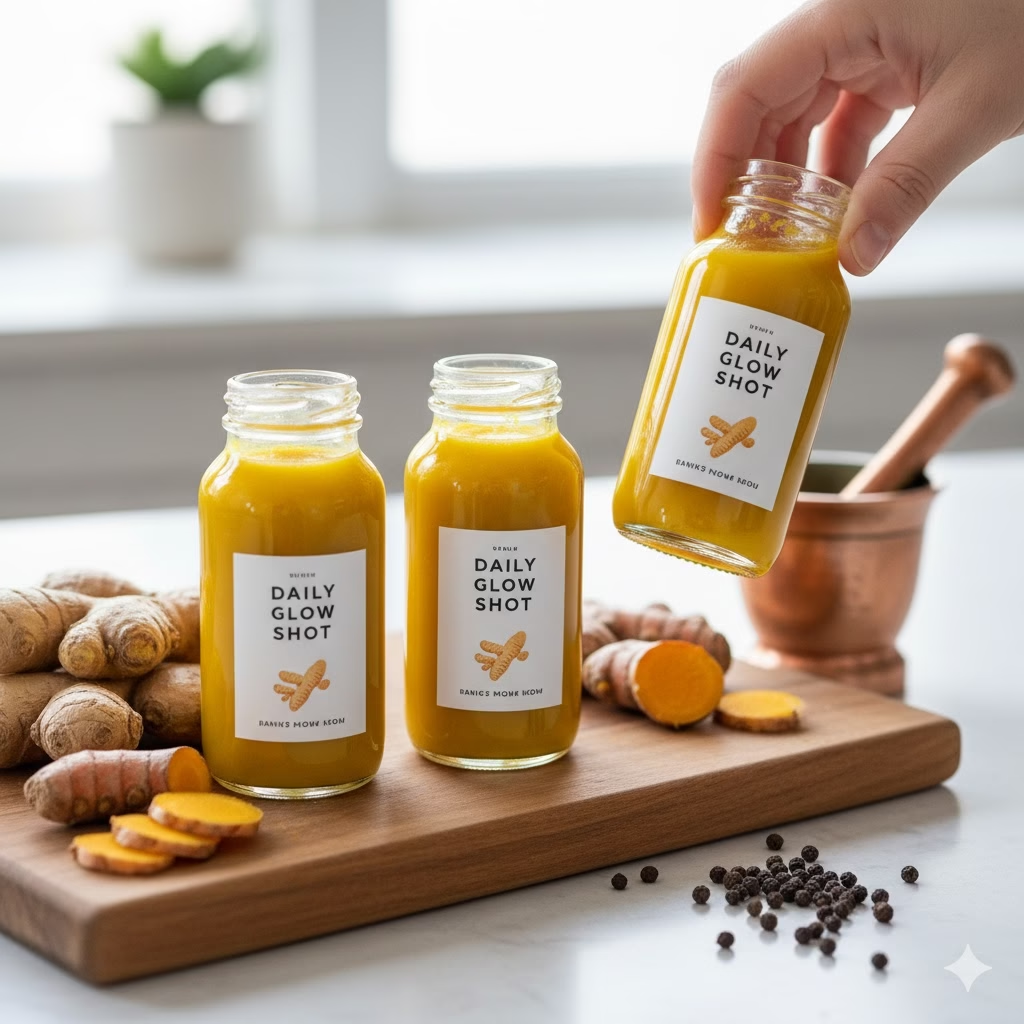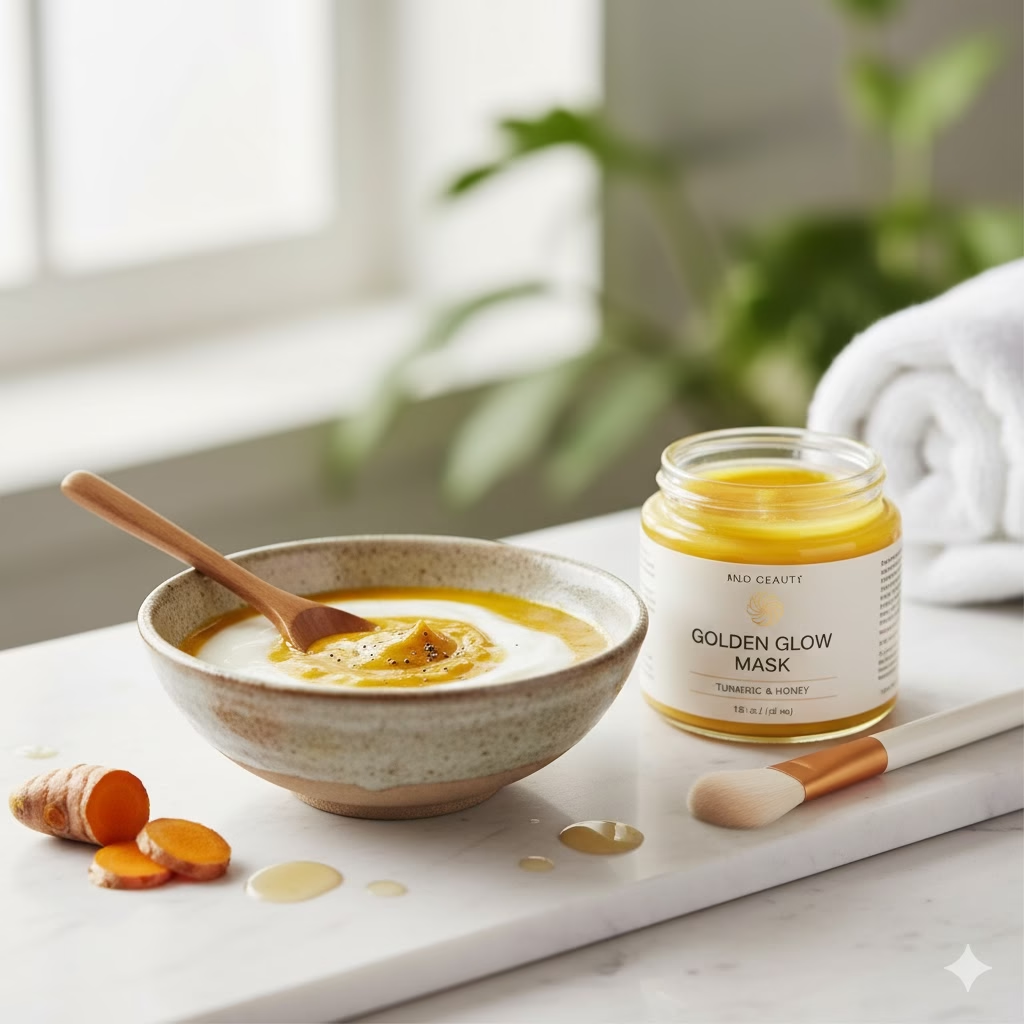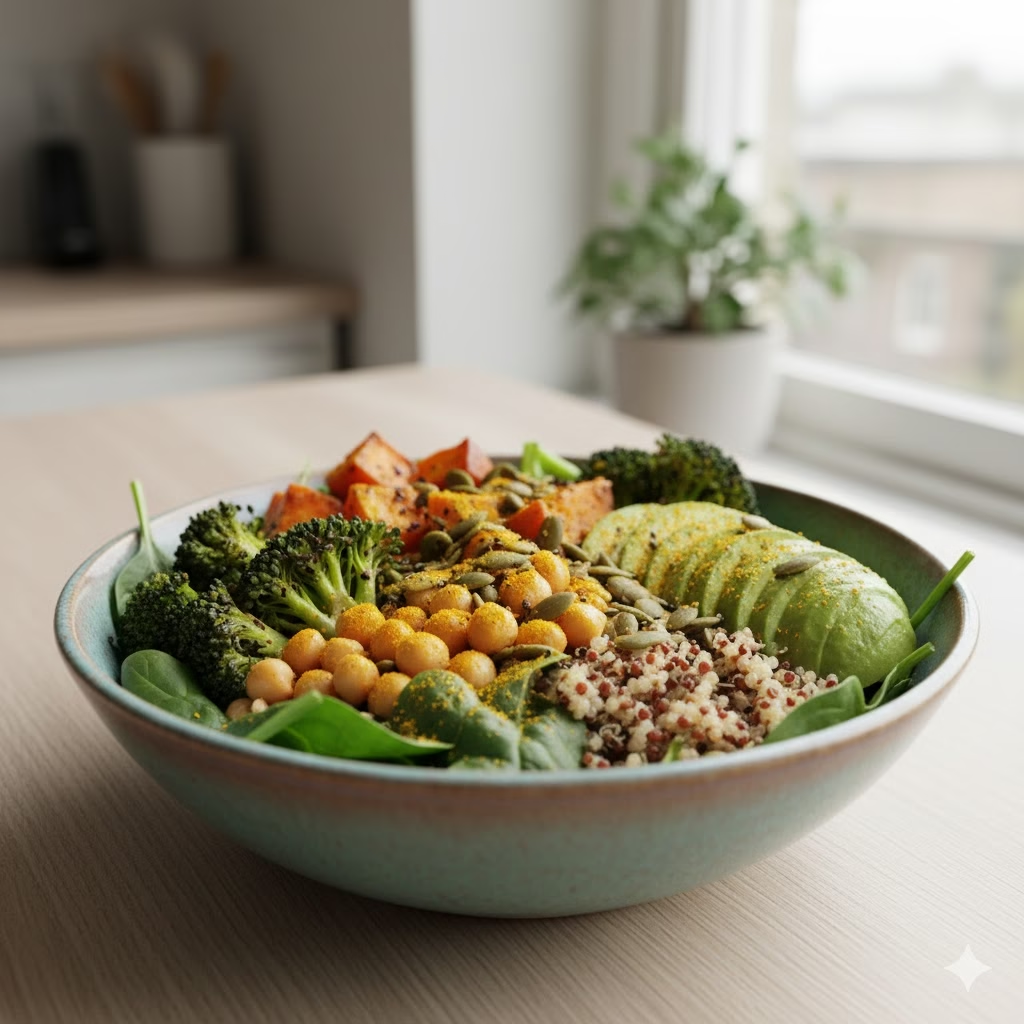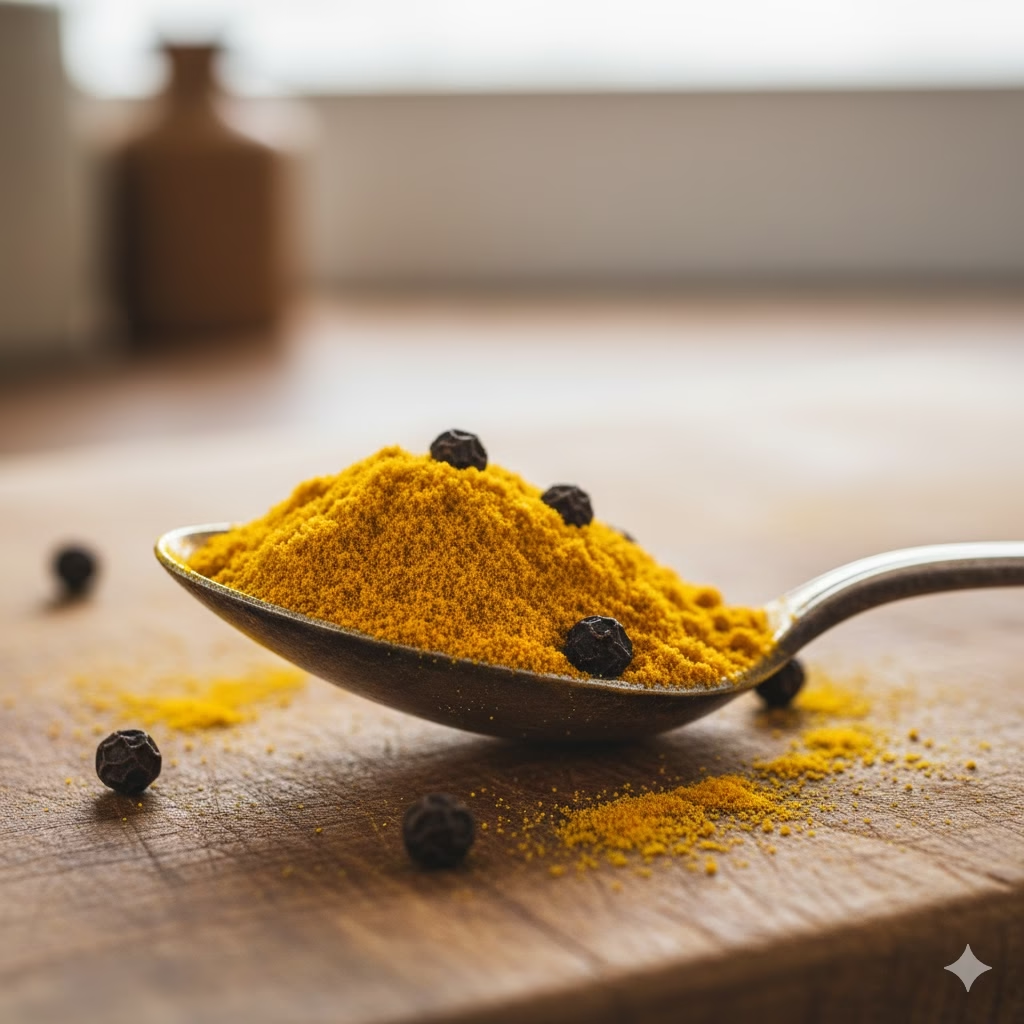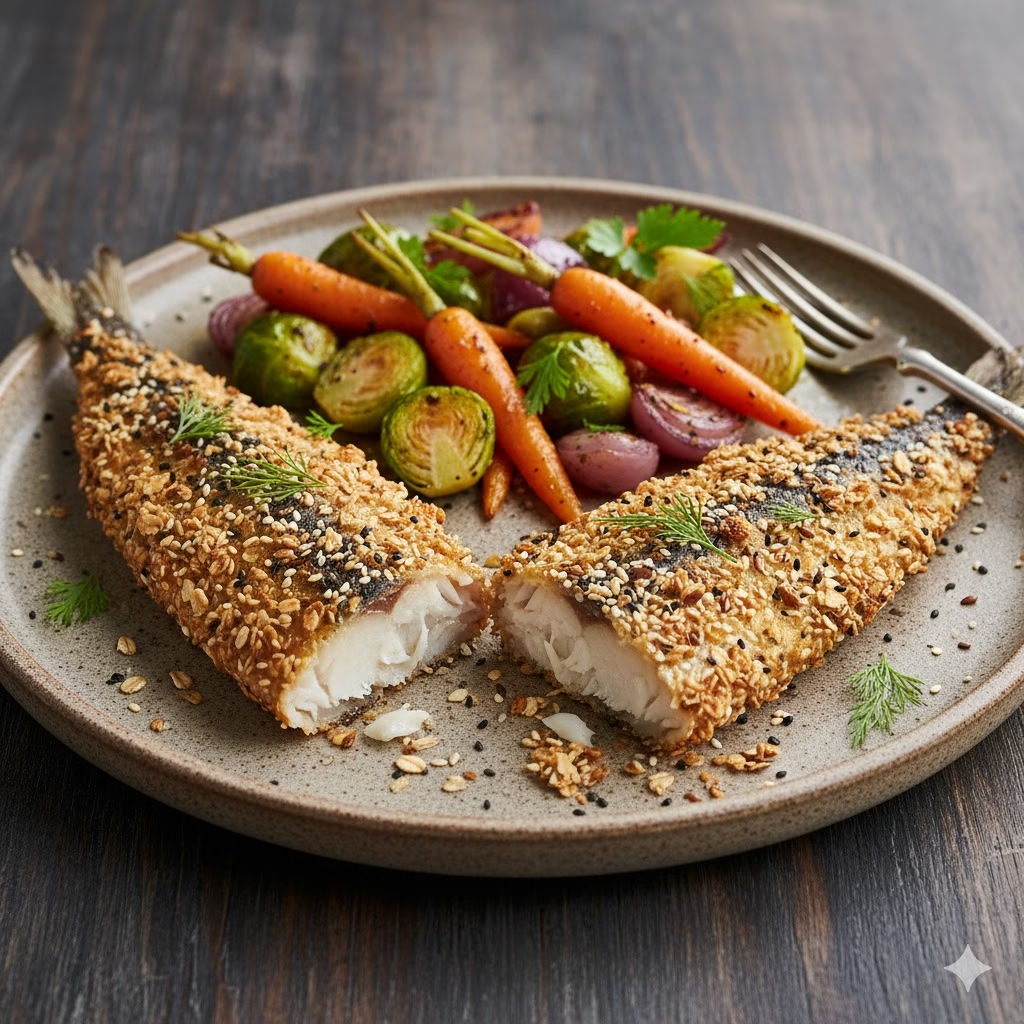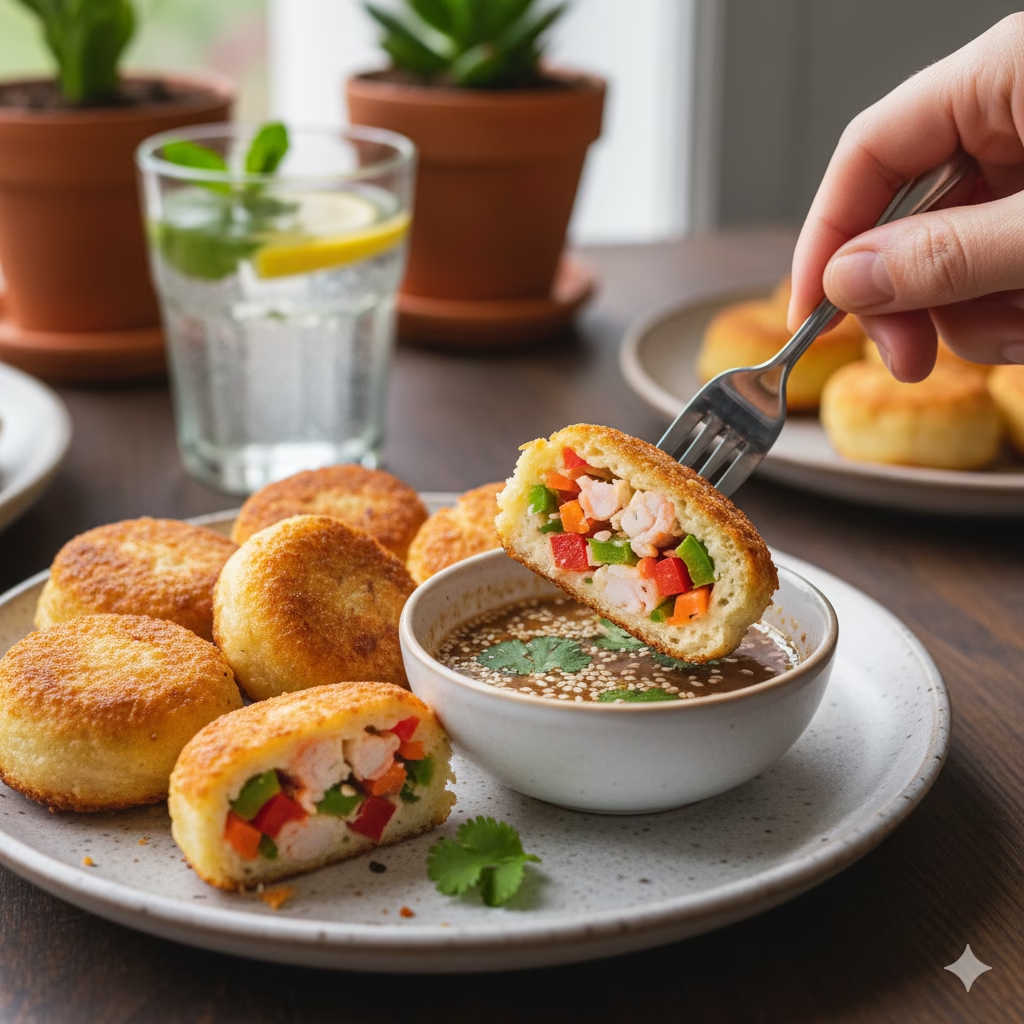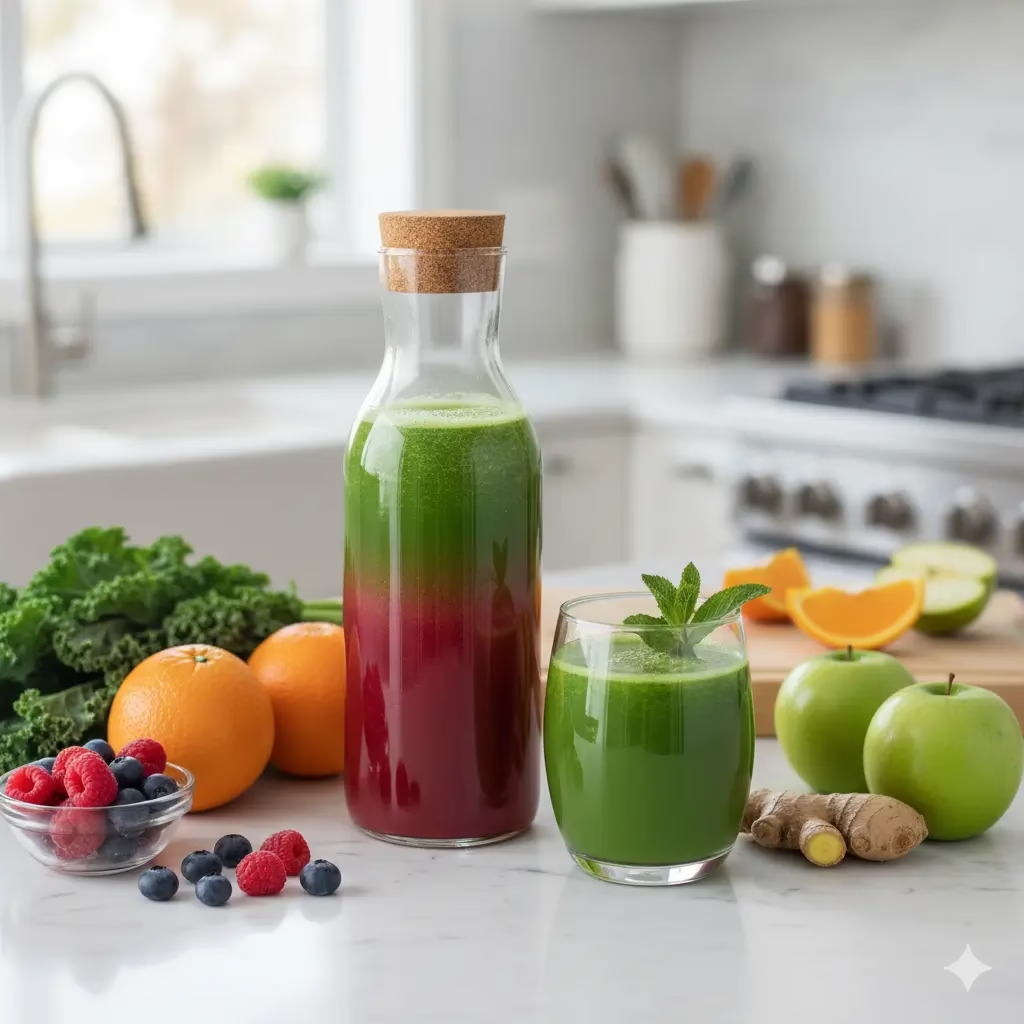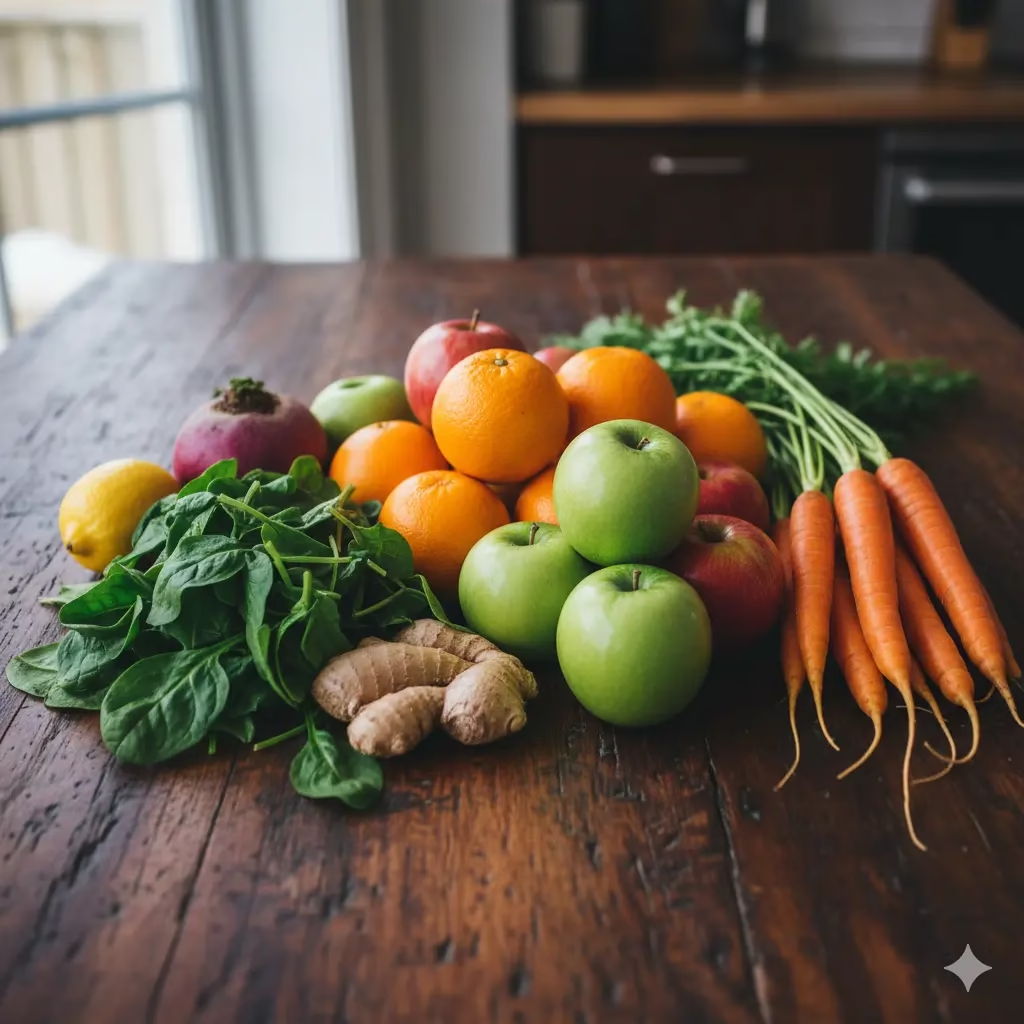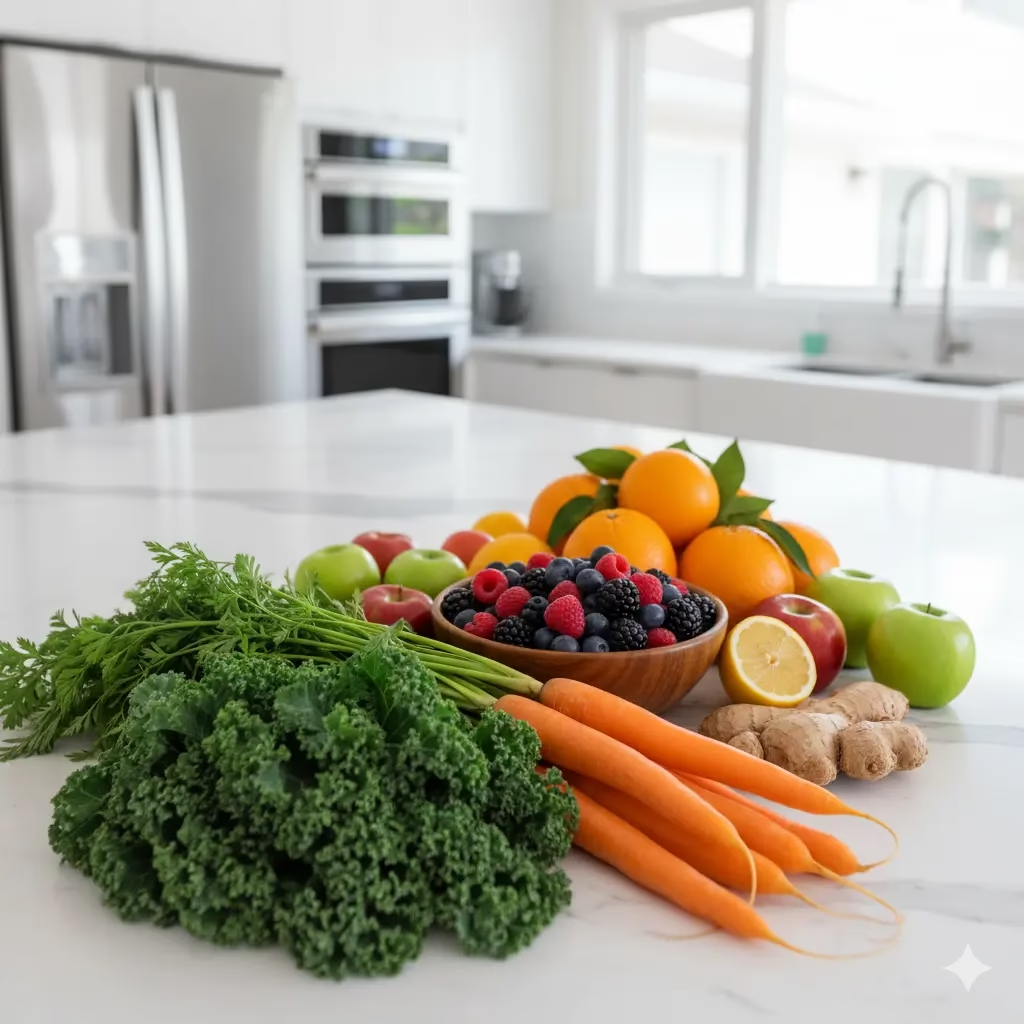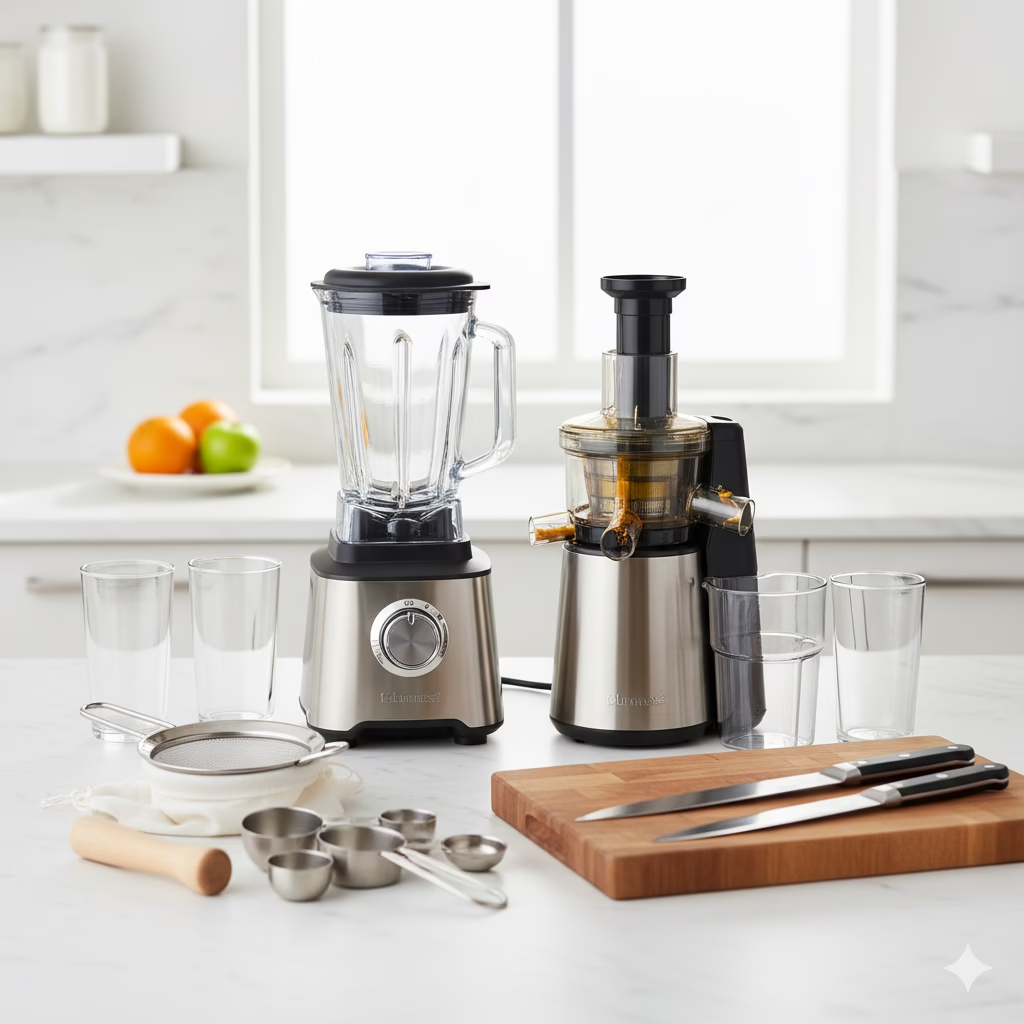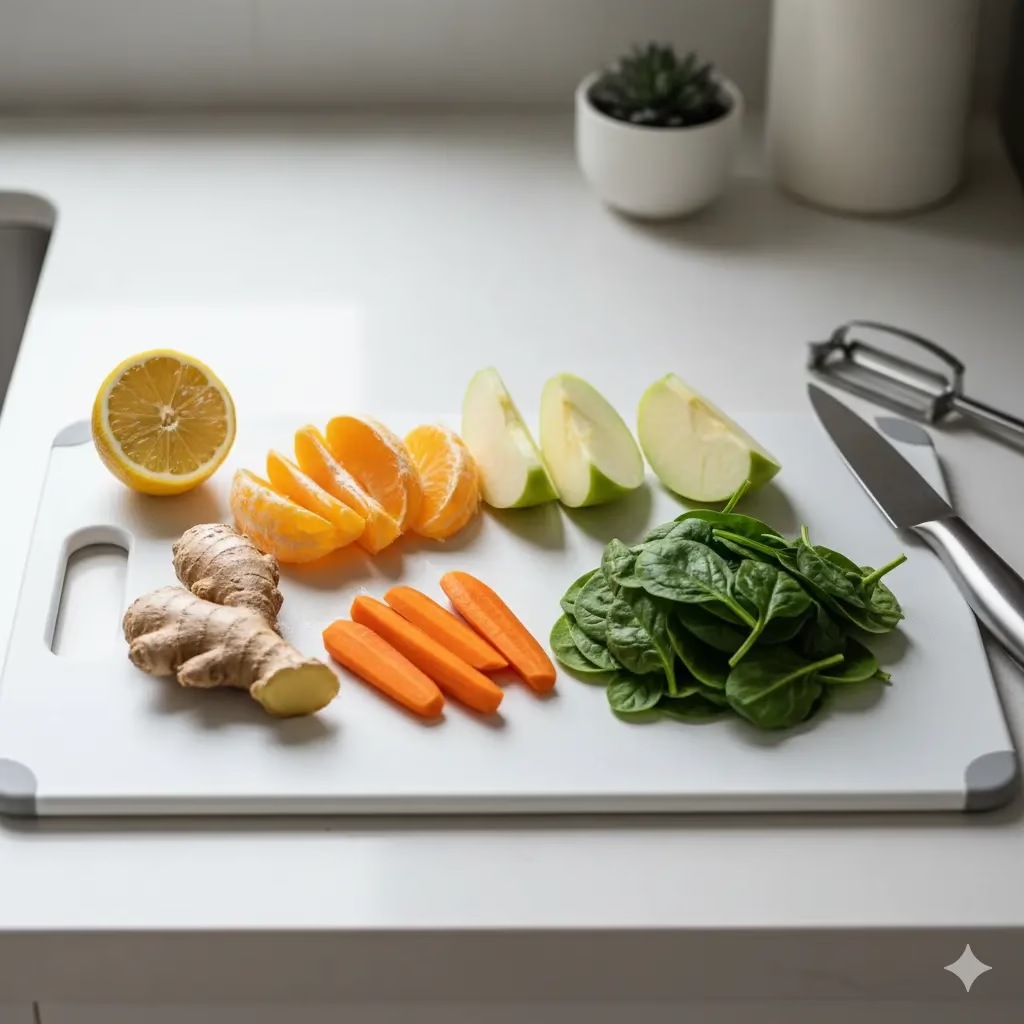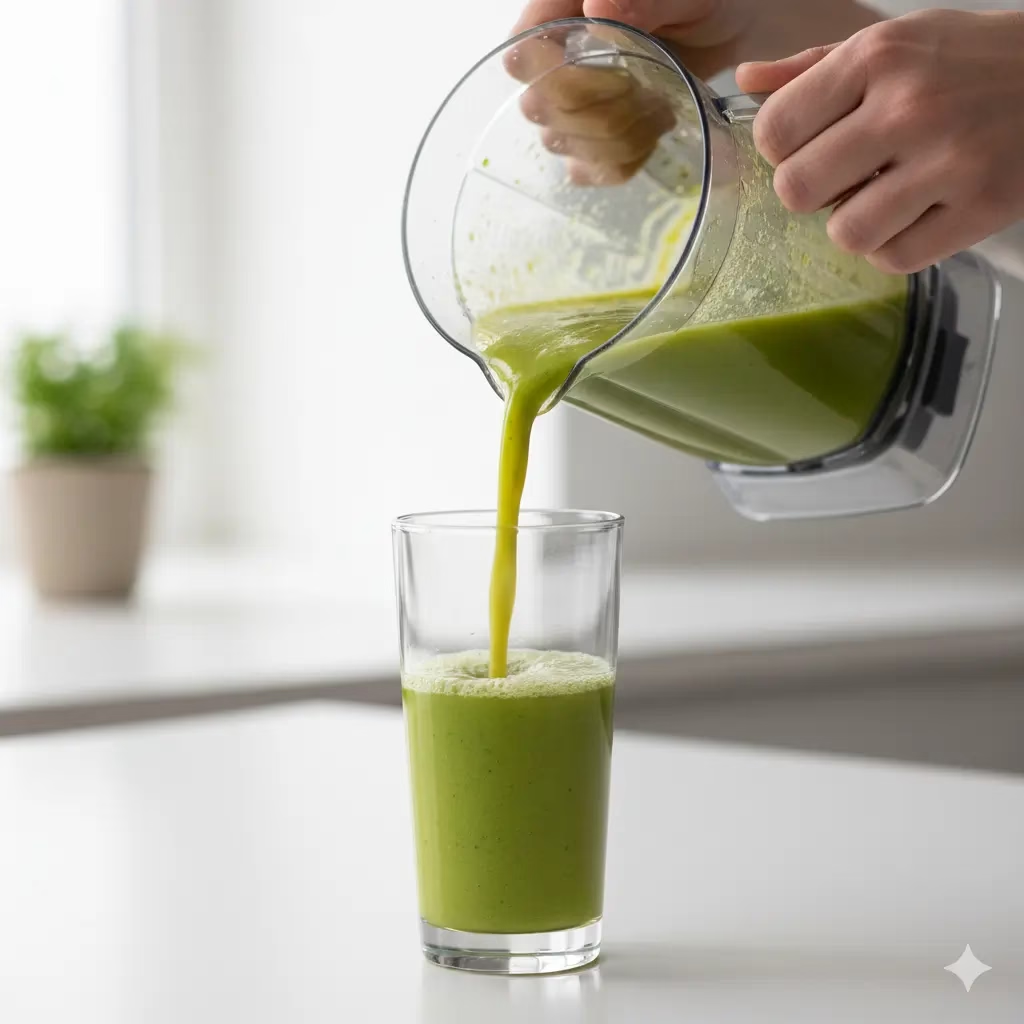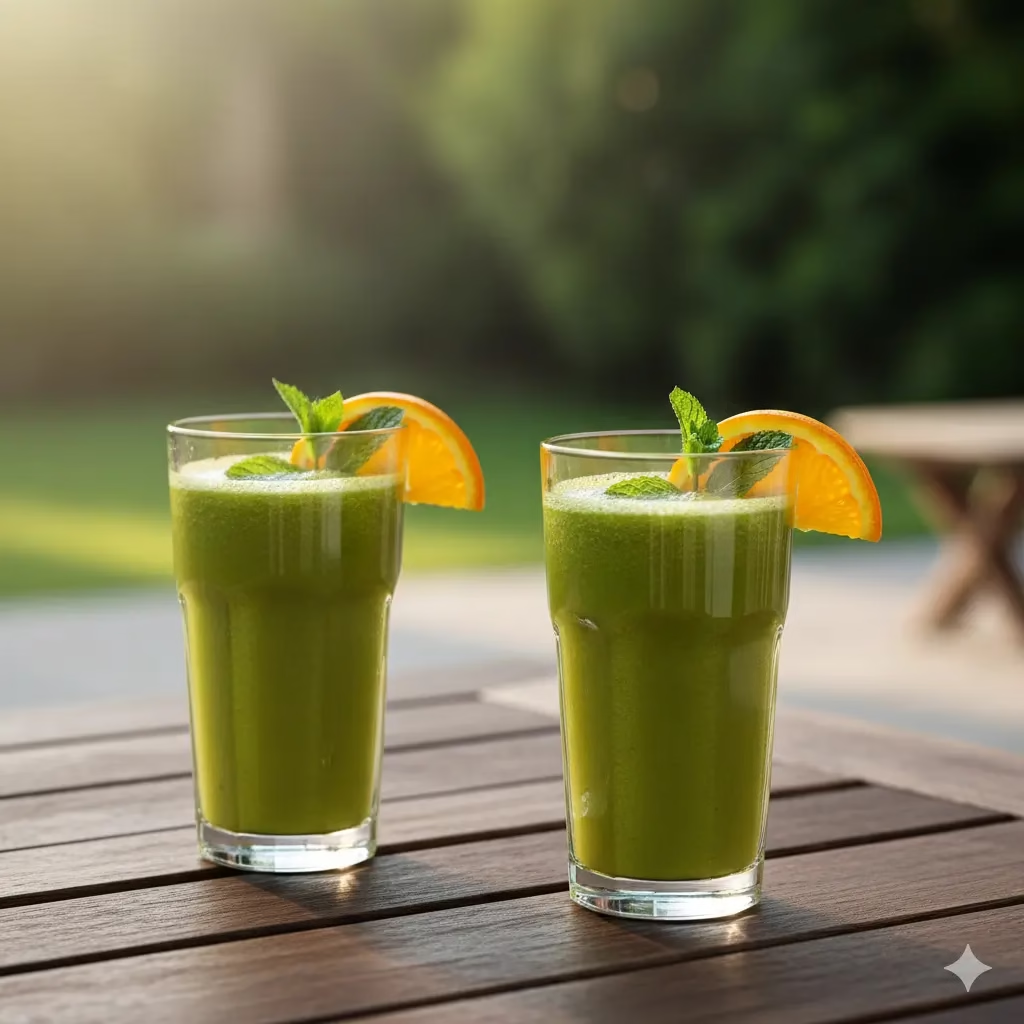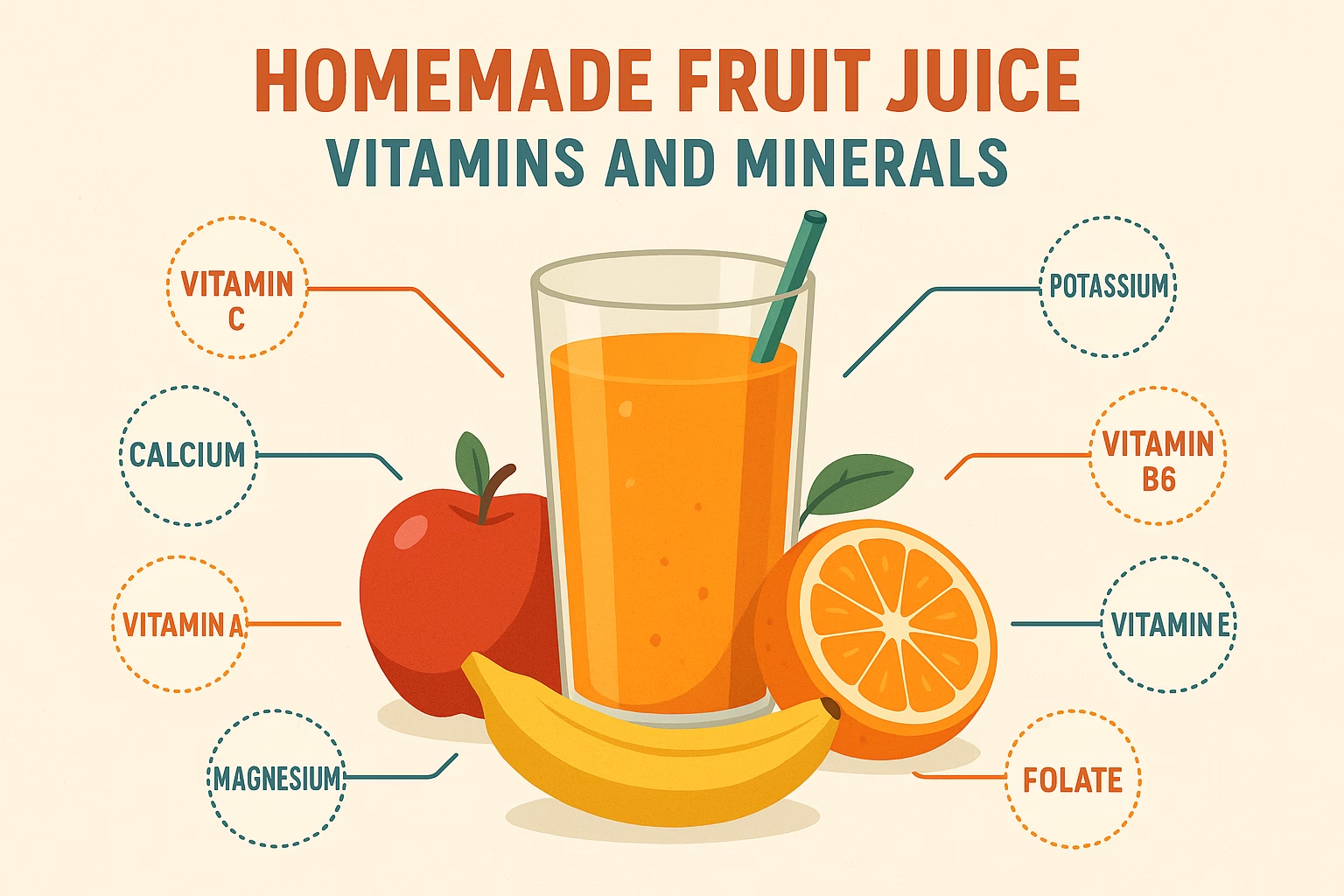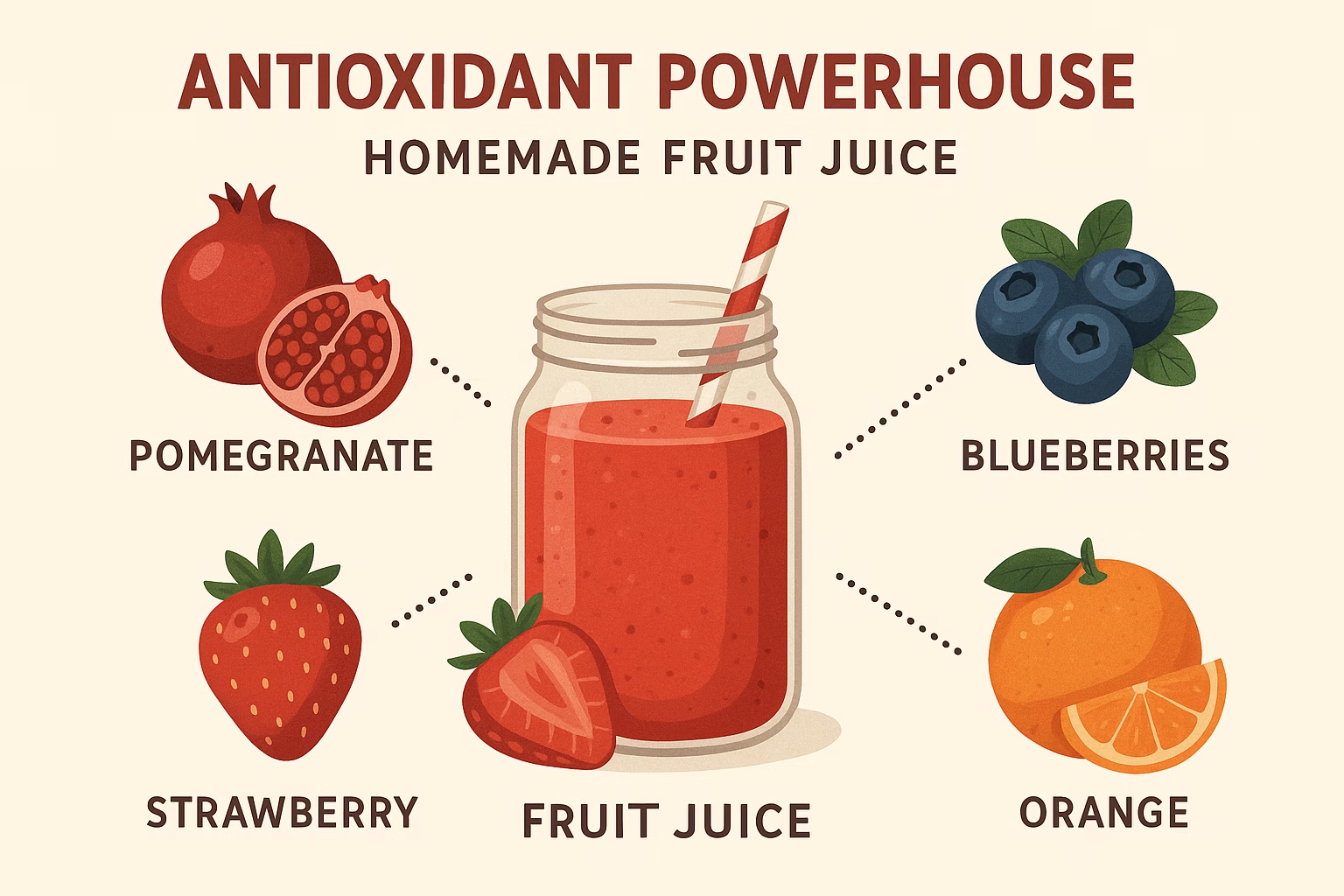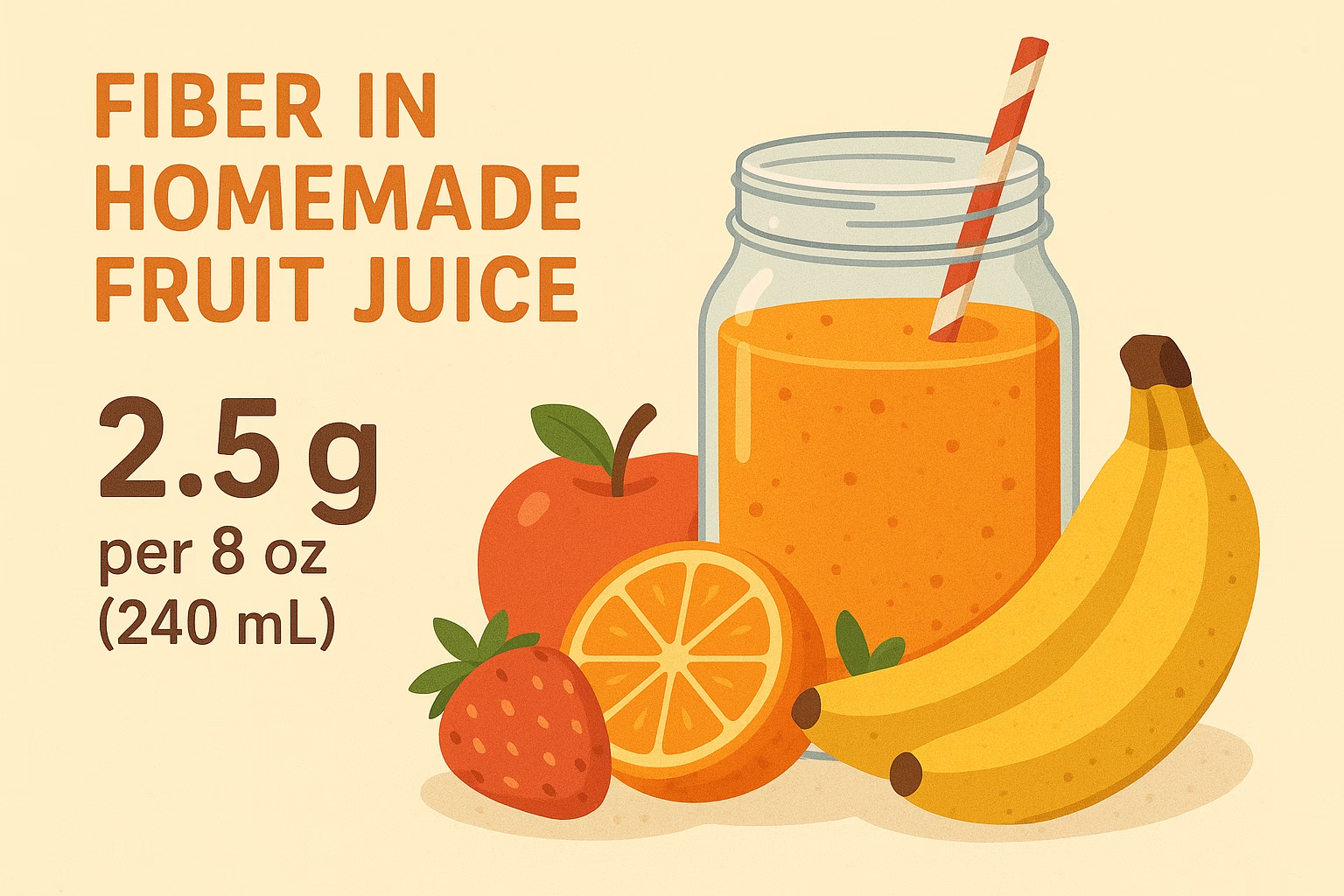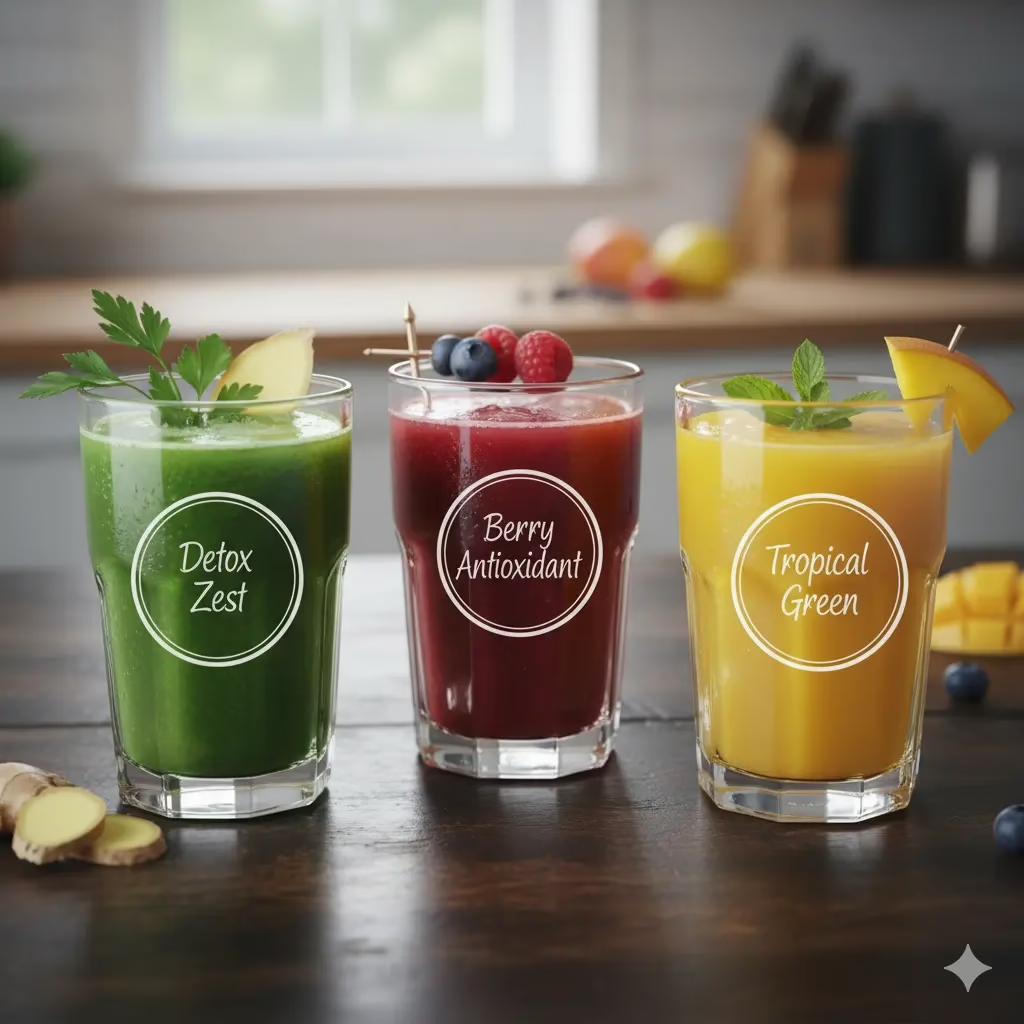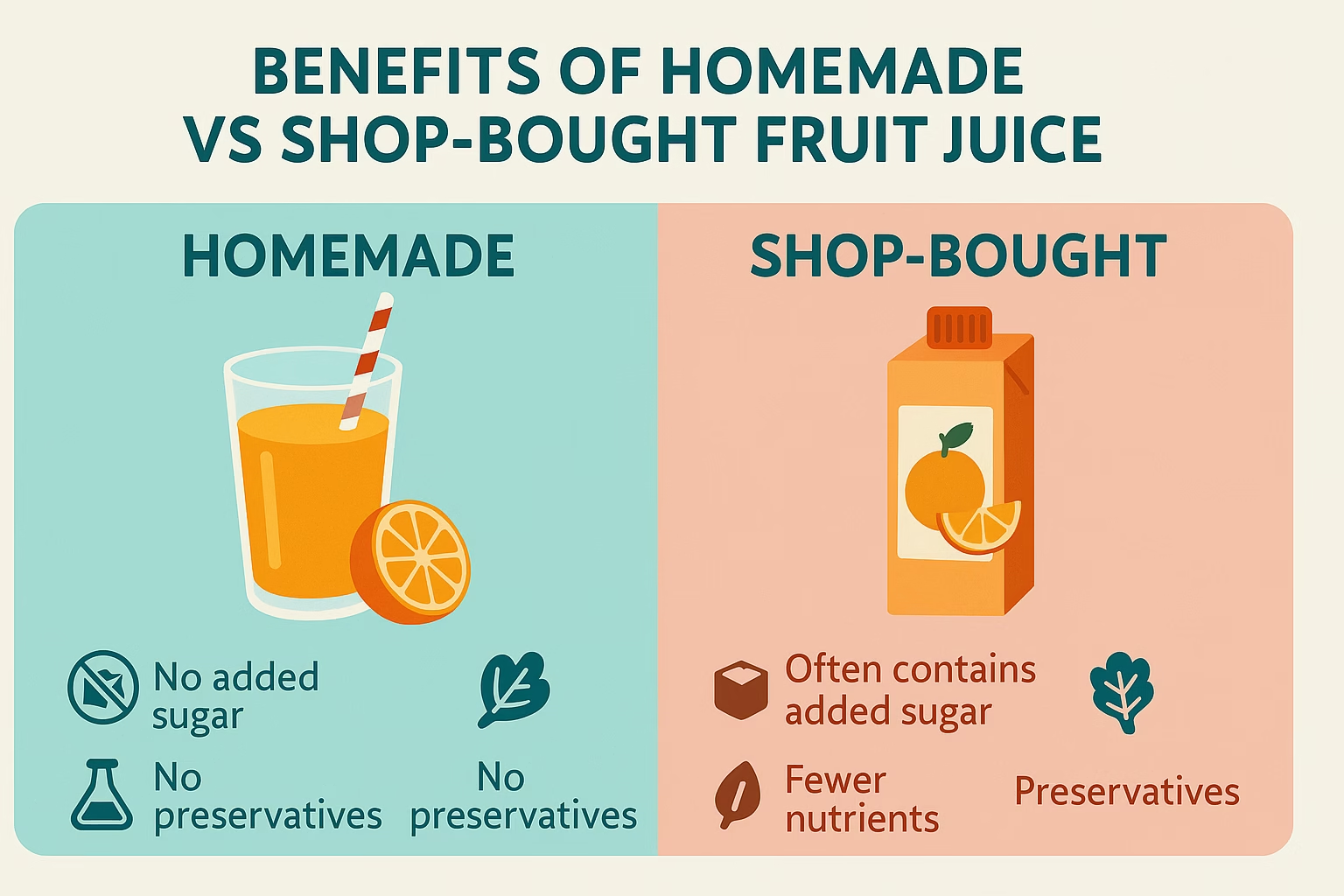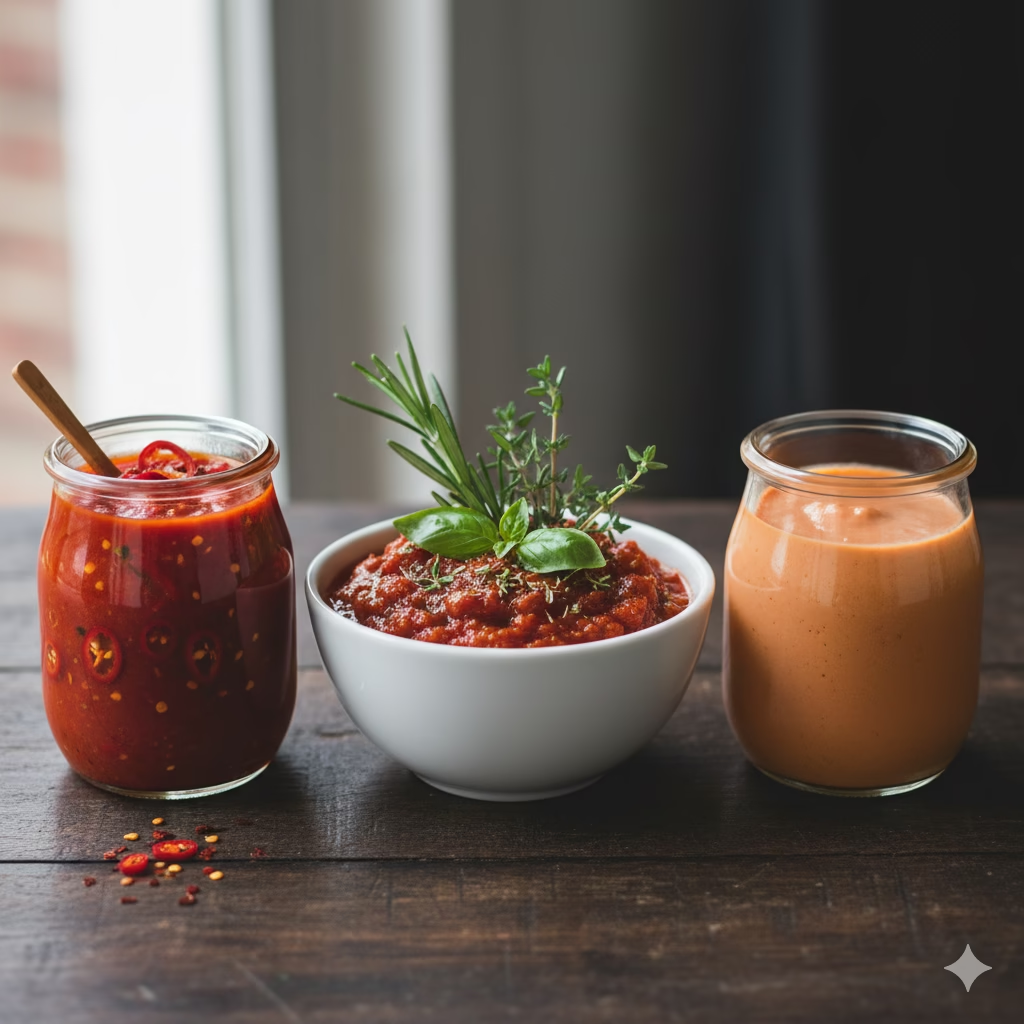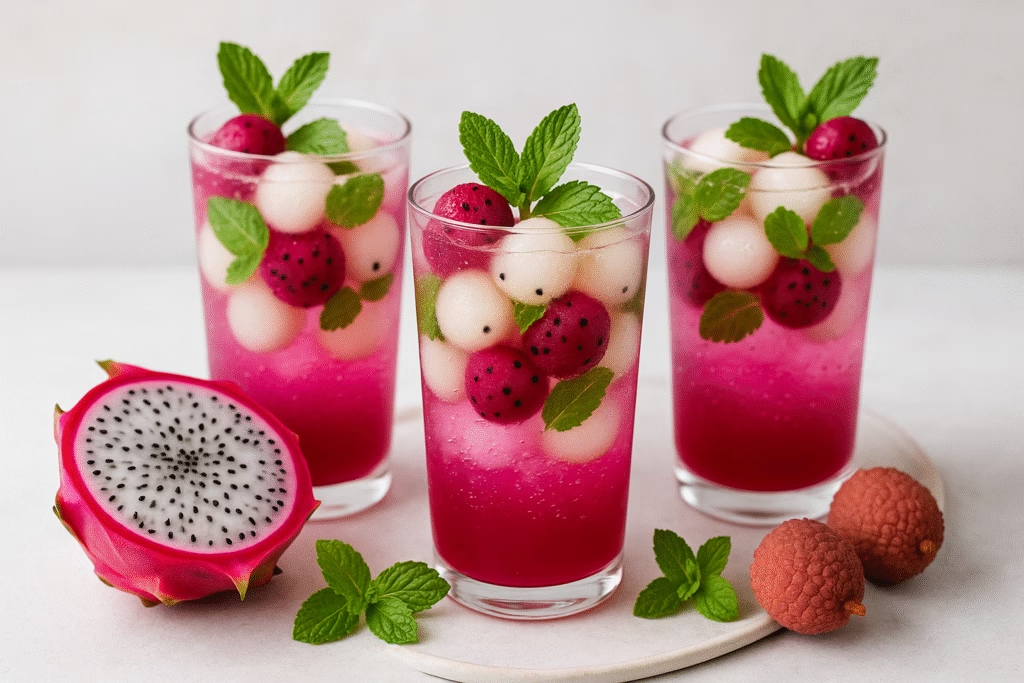
Like many of you, I love a good drink, but I don’t always enjoy the sugar crash or the next-day regrets. I started exploring the world of Healthy Mocktails because I wanted a beverage that was refreshing, exciting, and genuinely good for me. What began as a personal quest quickly turned into a passion for crafting vibrant, low-sugar drinks that anyone can enjoy. I’m thrilled to share my journey and simple recipes for delicious Healthy Mocktails with you right here!
Welcome to the World of Delicious Healthy Mocktails
Do you want a refreshing drink that won’t ruin your health goals? Do you crave a sophisticated beverage without the sugar, calories, or alcohol? You’ve come to the right place! Welcome to the world of healthy mocktails. This is where taste, wellness, and creativity meet.
For too long, non-alcoholic drinks have been sugary sodas, plain water, or very sweet juices. But things are changing! People are watching what they eat and drink. They want delicious, low-sugar, and low-calorie choices. Healthy mocktails are the perfect answer. They work if you are cutting back on alcohol, watching your sugar intake, or just want healthier hydration. They are great for parties, quiet evenings, or a delightful pick-me-up any time.
This complete guide will show you how to create truly delicious healthy mocktails. We will cover essential ingredients, simple techniques, and many inspiring recipes. You will be able to make impressive, guilt-free drinks that everyone will love.
The Idea Behind Healthy Mocktails: Why Simpler is Better

The main rule for healthy mocktails is to get maximum flavor and fun while avoiding too much sugar, artificial ingredients, and empty calories. This doesn’t mean the drinks taste boring; it’s the opposite! We focus on high-quality, natural ingredients. These items give complex flavors and natural sweetness. They also often bring useful nutrients.
Why should you choose healthy mocktails?
- Lower Sugar Intake: Regular cocktails and many store-bought mocktails are full of sugar. This leads to energy crashes, weight gain, and other health issues. Healthy mocktails use natural sweeteners lightly or rely on the natural sweetness of fruits and vegetables.
- Fewer Calories: Less sugar and fewer high-calorie mixers mean lighter drinks. These are great for managing your weight or just feeling better.
- Better Hydration: Many healthy mocktails are water-based. They use hydrating ingredients that help you drink more fluids overall.
- Nutrient Boost: Using fresh fruits, vegetables, herbs, and spices gives you vitamins, minerals, and antioxidants in every sip.
- No Alcohol, No Regrets: You get all the fun of a fancy drink without the alcohol effects. This is perfect for designated drivers, pregnant people, those in recovery, or anyone who chooses to be sober.
- Easy Creativity: Mocktails are an easy way to be creative in the kitchen. Try unique flavor mixes and beautiful presentations.
Essential Items for Your Healthy Mocktails

You need the right items to build a great healthy mocktail. Think fresh, bright, and natural.
1. The Base: Fizz and Tea
These items are the foundation for most healthy mocktails.
- Sparkling Water or Club Soda: Your best friend for bubbles without sugar. Choose unflavored types. Mineral water can add a subtle, earthy taste.
- Chilled Brewed Teas: Green tea, black tea, hibiscus tea, mint tea, or herbal fruit teas work well. They provide complex flavors and nice colors. Brew them extra strong for a bolder taste.
- Coconut Water: Great for a tropical taste. It naturally contains electrolytes.
2. Best Flavors: Fresh Fruits and Vegetables
This is where your drink gets exciting! Use produce that is in season for the best flavor.
- Citrus (Lemons, Limes, Oranges, Grapefruits): These are vital for brightness, acidity, and balance. Always use fresh juice.
- Berries (Strawberries, Raspberries, Blueberries): Naturally sweet, colorful, and full of antioxidants. Mash them gently for a strong flavor.
- Tropical Fruits (Pineapple, Mango, Passion Fruit): They add an exotic sweetness and a bright smell.
- Stone Fruits (Peaches, Cherries): They taste wonderful mashed or puréed when it’s their season.
- Cucumbers: They offer a cool, refreshing, and slightly green taste. They help balance other flavors.
- Ginger: Adds a spicy kick. Use it grated, sliced, or as a simple homemade syrup (see below).
- Herbs (Mint, Basil, Rosemary, Thyme, Cilantro): These boost your mocktails with complex scents. Mint is common, but try basil with berries, or rosemary with citrus.
3. Natural Sweeteners (Use Only a Little)
We aim for low sugar, but a little sweetness sometimes helps to balance tart flavors.
- Maple Syrup or Agave Nectar: Use very little. These are natural but still have calories and raise blood sugar.
- Stevia/Erythritol (Natural Sweeteners): These are zero-calorie options. They provide sweetness without changing blood sugar. Use them carefully, as too much can taste funny.
- Fruit Purées: A great way to add natural sweetness and thickness. Blend ripe fruits like dates (soaked), bananas, or berries.
- Homemade Simple Syrups (Diluted): Infuse water with fruit or ginger. Then add a very small amount of sweetener. This lets you control the sugar!
4. Spices and Extracts
Don’t forget the power of a pinch of spice or a few drops of extract.
- Cinnamon, Cardamom, Cloves: Great for cozy, warm mocktails, especially with apple or citrus.
- Vanilla Extract: Adds a smooth, sweet smell.
- Almond Extract: Just a few drops can change a simple drink.
How to Make Healthy Mocktails:Techniques and Tips

Making healthy mocktails is about more than mixing ingredients. It’s about learning a few easy techniques that make your drink truly amazing.
1. Muddling
What it is: Gently pressing fruits or herbs. This releases their juices and essential oils using a muddler or a spoon.
How to do it: Put your fruit or herbs into the bottom of a strong glass. Press down and twist a few times, but be gentle. You want to release the flavors, not make a mess of pulp.
Examples: Mint for a Mojito-style mocktail, or berries for a fruity spritzer.
2. Shaking
What it is: Mixing ingredients in a shaker with ice. This chills, slightly dilutes, and mixes the drink well.
How to do it: Fill a cocktail shaker halfway with ice. Add your liquid items (juices, syrups, etc.). Close the lid tightly and shake hard for 10 to 15 seconds. The shaker should look frosty.
Examples: Drinks with citrus juice, purées, or anything that needs a good chill and blend.
3. Layering
What it is: Creating separate colored layers in your drink. You pour liquids with different densities carefully.
How to do it: Pour the heaviest (most dense) liquid first. Then, pour the lighter liquid slowly over the back of a spoon. Hold the spoon against the inside of the glass.
Examples: Adding a splash of fruit juice to the bottom, then topping it with sparkling water.
4. Infusing & Syrups (Low-Sugar Style)
Make healthier syrups instead of using sugar-heavy ones.
- Herbal or Fruit Infusions: Steep fresh herbs (like mint or rosemary) or fruit slices (cucumber, ginger) right in your sparkling water or tea. Do this for 30 minutes or an hour for subtle flavor.
- Low-Sugar Simple Syrup: Mix equal parts water and a small amount of maple syrup/agave/erythritol in a pot. Heat it until the sweetener dissolves. For flavored syrups, add herbs or fruit while heating, then strain the mix after it cools. This keeps the sugar in your control!
- Example: Ginger Syrup: Mix 1/2 cup water, 1/4 cup erythritol, and 1/4 cup sliced fresh ginger. Simmer for 10 minutes. Strain and cool.
5. Garnishes: The Perfect Finish
Garnishes look nice and add scent. They make the drinking experience better.
- Fresh Herbs: A small bunch of mint, a basil leaf, or a sprig of rosemary.
- Citrus Slices or Peels: Classic and fragrant.
- Fruit Sticks: Berries or melon balls placed on a skewer.
- Edible Flowers: For a touch of fancy style.
- Cucumber Ribbons: Adds a spa-like feel.
5 Delicious Healthy Mocktails to Try Now
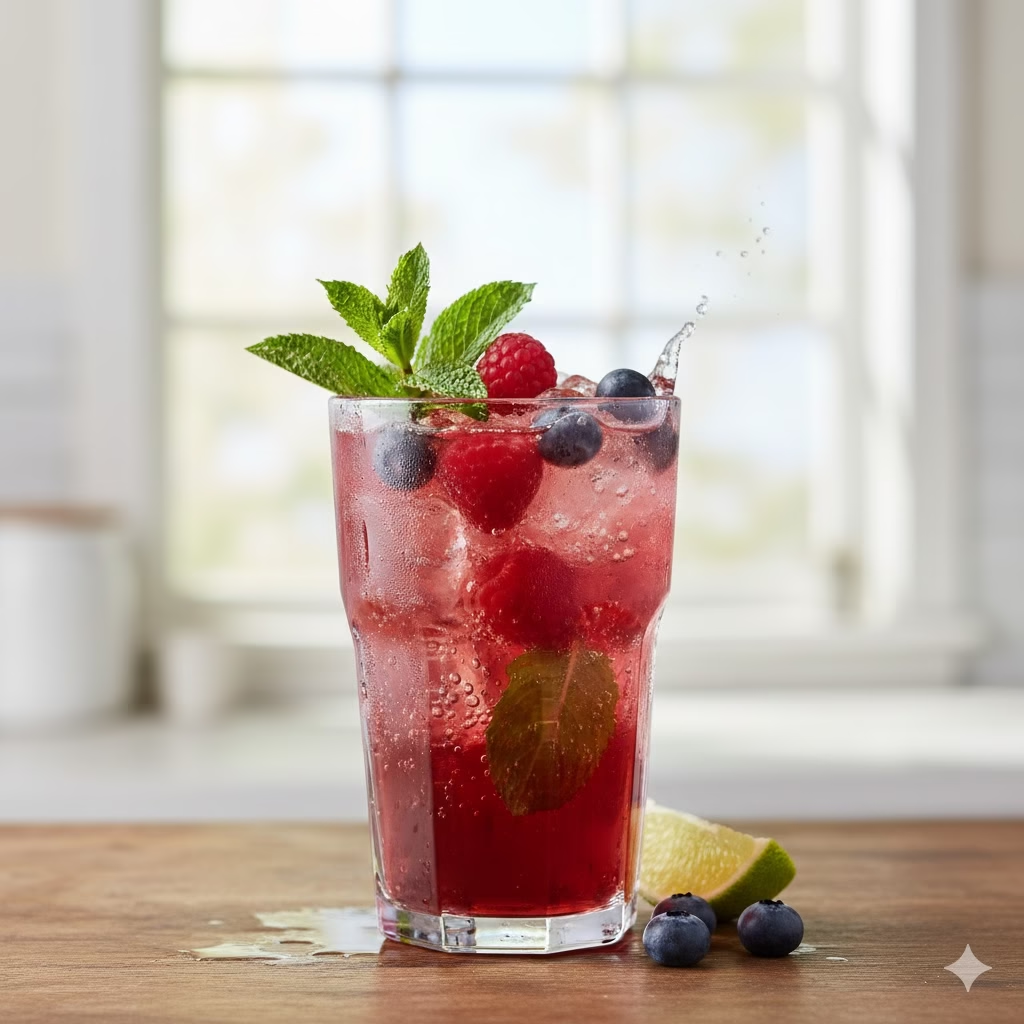
Let’s start mixing! Here are five easy and delicious healthy mocktail recipes. They are low-sugar and low-calorie. They work perfectly for any time.
1. Sparkling Berry Mint Refresher
A bright, refreshing, and naturally sweet mocktail.
Calories: About 30-50 per serving
Ingredients:
- 1/2 cup mixed berries (strawberries, raspberries, blueberries), fresh or frozen
- 5-6 fresh mint leaves
- 1/2 lime, juiced
- 1/4 to 1/2 teaspoon erythritol or a small amount of maple syrup (optional, to your taste)
- 1 cup unflavored sparkling water or club soda
- Ice
- Garnish: Fresh berries and a mint sprig
How to make it:
- In a strong glass, add the mixed berries and mint leaves.
- Gently muddle the berries and mint. This releases their juices and oils.
- Add the fresh lime juice and the sweetener (if you are using it).
- Fill the glass with ice.
- Pour sparkling water over the top.
- Stir gently to mix.
- Garnish with extra berries and a mint sprig.
2. Cucumber Ginger Spritzer

Cool, spicy, and very hydrating.
Calories: About 20-40 per serving
Ingredients:
- 4-5 thin slices of cucumber
- 2-3 thin slices of fresh ginger
- 1/2 lemon, juiced
- 1/4 teaspoon erythritol or a tiny drizzle of agave (optional)
- 1 cup unflavored sparkling water
- Ice
- Garnish: A cucumber ribbon and a lemon slice
How to make it:
- In a glass, gently muddle the cucumber and ginger slices. This releases their flavors.
- Add the fresh lemon juice and sweetener (if you are using it).
- Fill the glass with ice.
- Pour sparkling water over the top.
- Stir well.
- Garnish with a cucumber ribbon (use a vegetable peeler to make one) and a lemon slice.
3. Tropical Green Tea Tango

An exotic, antioxidant-rich mocktail with a subtle tea base.
Calories: About 40-60 per serving
Ingredients:
- 1/2 cup chilled, strong-brewed green tea
- 1/4 cup unsweetened pineapple juice (or mashed fresh pineapple chunks)
- 1 tablespoon fresh lime juice
- 1/2 teaspoon passion fruit purée (unsweetened, if possible) or a few fresh passion fruit seeds
- A pinch of erythritol or stevia (optional, to your taste)
- 1/2 cup sparkling water or club soda
- Ice
- Garnish: A pineapple wedge and a lime wheel
How to make it:
- If using fresh pineapple, mash a few chunks in a shaker.
- Mix the chilled green tea, pineapple juice, lime juice, passion fruit purée, and sweetener (if using) in a cocktail shaker. Fill it with ice.
- Shake hard for 10 to 15 seconds until the mix is very cold.
- Strain the drink into a glass filled with fresh ice.
- Pour sparkling water over the top.
- Garnish with a pineapple wedge and a lime wheel.
4. Spiced Apple Cider Fizz

A cozy, warm, yet refreshing mocktail for colder times.
Calories: About 50-70 per serving
Ingredients:
- 1/2 cup unsweetened apple cider (or natural apple juice mixed with water)
- 1/4 teaspoon ground cinnamon
- A pinch of ground cloves (optional)
- A squeeze of fresh lemon juice
- 1/2 cup unflavored sparkling water
- Ice
- Garnish: An apple slice and a cinnamon stick
How to make it:
- In a glass, mix the apple cider, cinnamon, cloves (if using), and lemon juice. Stir well.
- Fill the glass with ice.
- Pour sparkling water over the top.
- Stir gently.
- Garnish with an apple slice and a cinnamon stick.
5. Rosemary Grapefruit Elixir
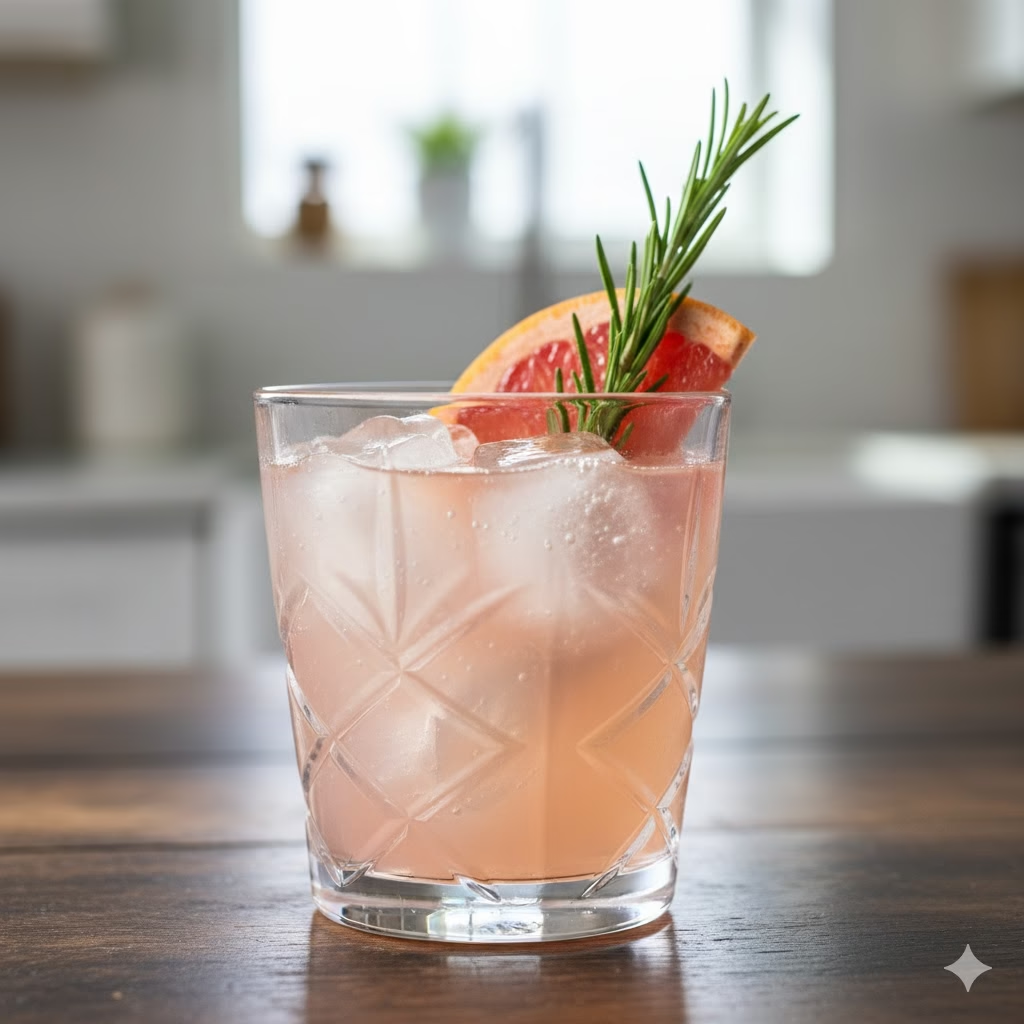
A sophisticated, slightly tart, and lovely smelling drink.
Calories: About 30-50 per serving
Ingredients:
- 1/2 cup fresh grapefruit juice (unsweetened)
- 1 sprig of fresh rosemary, plus extra for garnish
- 1/4 teaspoon erythritol or a tiny drizzle of agave (optional, to cut bitterness)
- 1/2 cup unflavored sparkling water
- Ice
- Garnish: A rosemary sprig and a grapefruit slice
How to make it:
- In a glass, gently muddle the rosemary sprig. This releases its oils.
- Add the fresh grapefruit juice and sweetener (if using). Stir well.
- Fill the glass with ice.
- Pour sparkling water over the top.
- Stir gently to mix.
- Garnish with a fresh rosemary sprig and a grapefruit slice.
Tips for Best Results and Customization for Healthy Mocktails
- Taste as You Go: This is very important! Everyone has a different taste. Start with less sweetener. You can always add more later.
- Fresh Tastes Best: Always use fresh juices and herbs for the best flavor.
- Use Lots of Ice: Plenty of ice keeps your mocktail cold. It prevents it from tasting watery too fast. Use large ice cubes if you can.
- Try Infusions: Try letting your sparkling water sit with cucumber and mint overnight. Or make a large batch of low-sugar ginger syrup.
- Balance is Key: A great mocktail balances sweet, sour, and sometimes bitter or spicy notes.
- Make Batches for Parties: If you are hosting, prepare your fruit purées, juices, and low-sugar syrups ahead of time. Mix individual drinks with sparkling water right before serving. This keeps the drink fizzy.
- Good Presentation Matters: A nice glass and a beautiful garnish make the experience much better.
Taking Your Healthy Mocktails to the Next Level
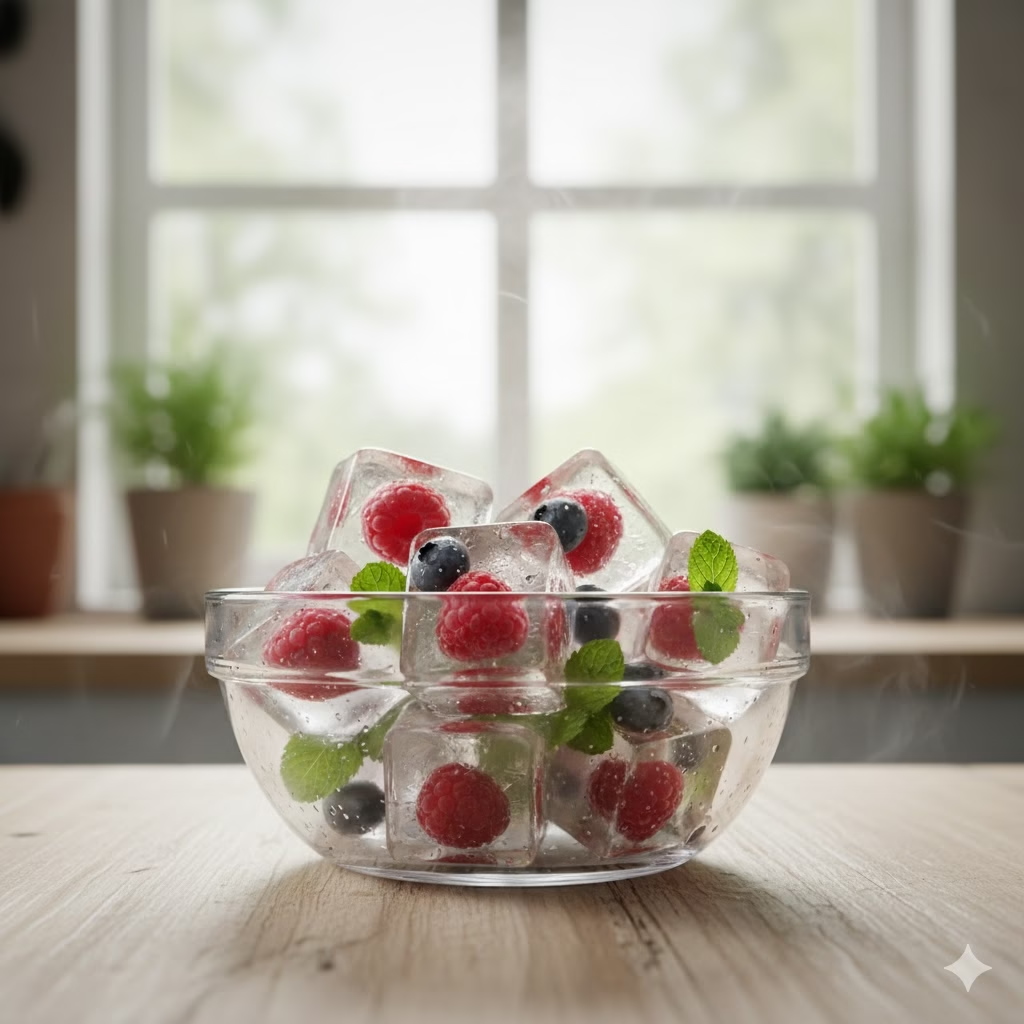
To make your mocktails even better, try a little more creativity and attention to detail.
Homemade Infusions and Flavored Ice
Fruit and Herb Ice Cubes: Freeze water with small bits of fruit (berries, citrus peel) or herb leaves (mint, basil). When they melt, they subtly flavor the drink instead of watering it down.
Floral Teas: Brewed and chilled hibiscus, rosehip, or lavender tea can make a beautiful base. They add complex floral tastes and vibrant colors.
Vegetable Juices: A small amount of fresh carrot, beet, or celery juice adds an earthy depth and nutrients. They pair well with citrus or ginger.
The Right Tools
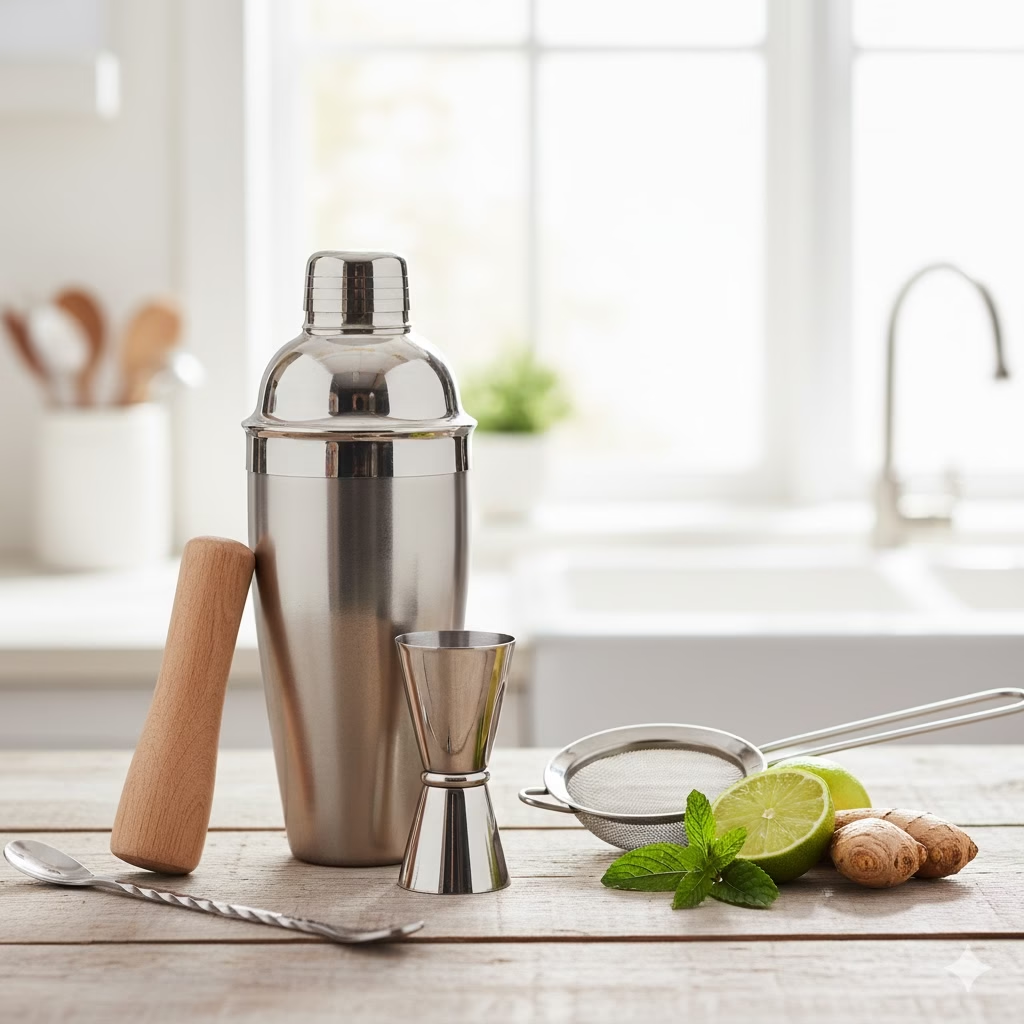
You don’t need a professional bar setup, but a few tools help:
- Muddler: Necessary for getting the flavor out of fruits and herbs.
- Cocktail Shaker: For properly chilling and mixing your ingredients.
- Jigger or Measuring Spoons: For measuring concentrated flavors accurately.
- Citrus Juicer: A good squeezer makes juicing fresh citrus very easy.
- Fine-Mesh Strainer: Use this to remove pulp or herb pieces if you want a smoother drink.
- Variety of Glasses: Different glass shapes can make the drink more enjoyable.
Conclusion: Drink Healthy Mocktails for Greater Hydration

Making delicious healthy mocktails is a fun way to try new things. Use fresh, natural ingredients. Use less sugar. Experiment with different flavors. You can create drinks that taste great and also help your well-being. Whether you are hosting a party, relaxing after a long day, or just need a refreshing, healthy drink, these low-sugar, low-calorie mixes offer endless choices. So, grab your muddler, choose your favorite fruits and herbs, and start mixing. Your taste buds and your body will both thank you!
FAQ (Frequently Asked Questions)
Q1: What makes a mocktail truly “healthy”?
A1: A mocktail is healthy when it uses mostly fresh, natural items. It is low in added sugars and artificial sweeteners. And low in calories. It typically includes fruits, vegetables, herbs, and sparkling water or unsweetened teas.
Q2: Can I use frozen fruit for healthy mocktails?
A2: Yes, absolutely! Frozen fruit works great for mashing (muddling) or blending into purées. It also helps keep your drink colder for longer without getting watery too fast.
Q3: How can I make my mocktails more fizzy without adding sugar?
A3: Use unflavored sparkling water, club soda, or seltzer as your main bubbly base. Make sure these are very cold before you mix. You can also try naturally fermented drinks like kombucha (choose low-sugar types) for extra fizz and probiotics.
Q4: What is the best way to sweeten a mocktail without using sugar?
A4: Focus on the natural sweetness found in ripe fruits (like berries, mango, or pineapple). If you need more sweetness, use very small amounts of zero-calorie sweeteners like erythritol or stevia. A tiny bit of pure maple syrup or agave nectar also works. You can also make low-sugar syrups by mixing these sweeteners with water and infusing them with fruit or herbs.
Q5: How early can I prepare the mocktail ingredients?
A5: You can prepare most juices, purées, and low-sugar syrups 1 to 2 days before. Store them in closed containers in the refrigerator. For the best taste and fizz, always mix the final mocktail with sparkling water and ice right before you serve it. Add fresh herbs and garnishes at the very end.
Q6: Are the store-bought “zero-proof” spirits healthy?
A6: It depends on the brand. They are alcohol-free, but some might still have added sugars or fake ingredients. Always check the nutrition facts and ingredient list. Make sure they meet your goal for a healthy mocktail.
References
- Nutritionsource – Sugary Drinks
- Mayo Clinic – Artificial sweeteners and other sugar substitutes
- Healthline – 8 Health Benefits of Mint
Recent Posts
